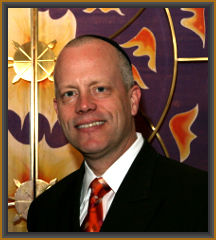
 |
May 7, 2021 30 For 30
Dear Holy Friends, I hope this correspondence finds you doing well. Please join us for our new Monday night adult education program entitled "Irregular Rabbis". Each week, we will meet a different rabbi, who preaches, but not from the pulpit. This week, we will be joined by noted scholar and author, Professor Robbie Harris of JTS, who is also the lead guitarist of the rock band SR2. A rabbi who is also a rock star! Go figure! Just over a decade ago, ESPN launched a fantastic film series called "30 for 30"". As part of the network’s 30th anniversary celebration, the company looked back at notable sports happenings that occurred from 1979 to 2009. The documentary series featured thirty films from some of Hollywood's finest directors and producers. The stories included the shocking trade of Wayne Gretzky in 1988, the Baltimore Colts' nighttime move in 1984, Reggie Miller's rivalry with the New York Knicks, a profile of George Steinbrenner, and a look at Michael Jordan's attempt at a baseball career. ESPN felt that the 30 for 30 series provided an opportunity for reflection on and acknowledgment of their own growth, success, and accomplishments. However, I would argue that this kind of 30 for 30 “retrospective” really comes out of a Jewish tradition that we call Sheloshim. Following Shiva, the initial mourning period, there is a secondary period of mourning, which lasts for 30 days. This is the Sheloshim, a period for reflection and gratitude, as we recall the highlights of the lives of our loved ones. Although Sheloshim is a period of mourning, it is far less intense than Shiva. The mourners resume normal social and professional duties, but are still restricted in certain ways. For example, a person does not cut one’s hair during this time, a custom dating back to the Bible (Leviticus 10:6). Another restriction observed for 30 days is not attending social events or even religious celebrations (Yoreh Deah, 391:1). Wearing new clothes during this period of time is also considered inappropriate. This 30-day period is intended to ease the mourner back into normal routines by allowing the resumption of many, but not all, of one’s regular patterns of social behavior. At the conclusion of the 30 days, a Sheloshim memorial service is often held, at which time various Jewish texts are taught in memory of the deceased. This past week, I concluded the Sheloshim period for my mother, of blessed memory. With the support of my family, friends and our synagogue community, I was able to sit back and reflect on the many “highlights” of her life and the legacy of love which she has left behind. Chances are that for most of us, a documentary movie of our life will not be produced and shown to millions of sports, or other, fans. Nonetheless, during the past thirty days, I have been blessed to have reviewed in my mind’s eye, hours of “film” of time spent, holidays celebrated, and life lived. ESPN may be great, but there is always profound wisdom, beauty, and meaning to be found in our ancient Jewish customs. Shabbat Shalom,
Rabbi Eric L. Wasser, EdD
|